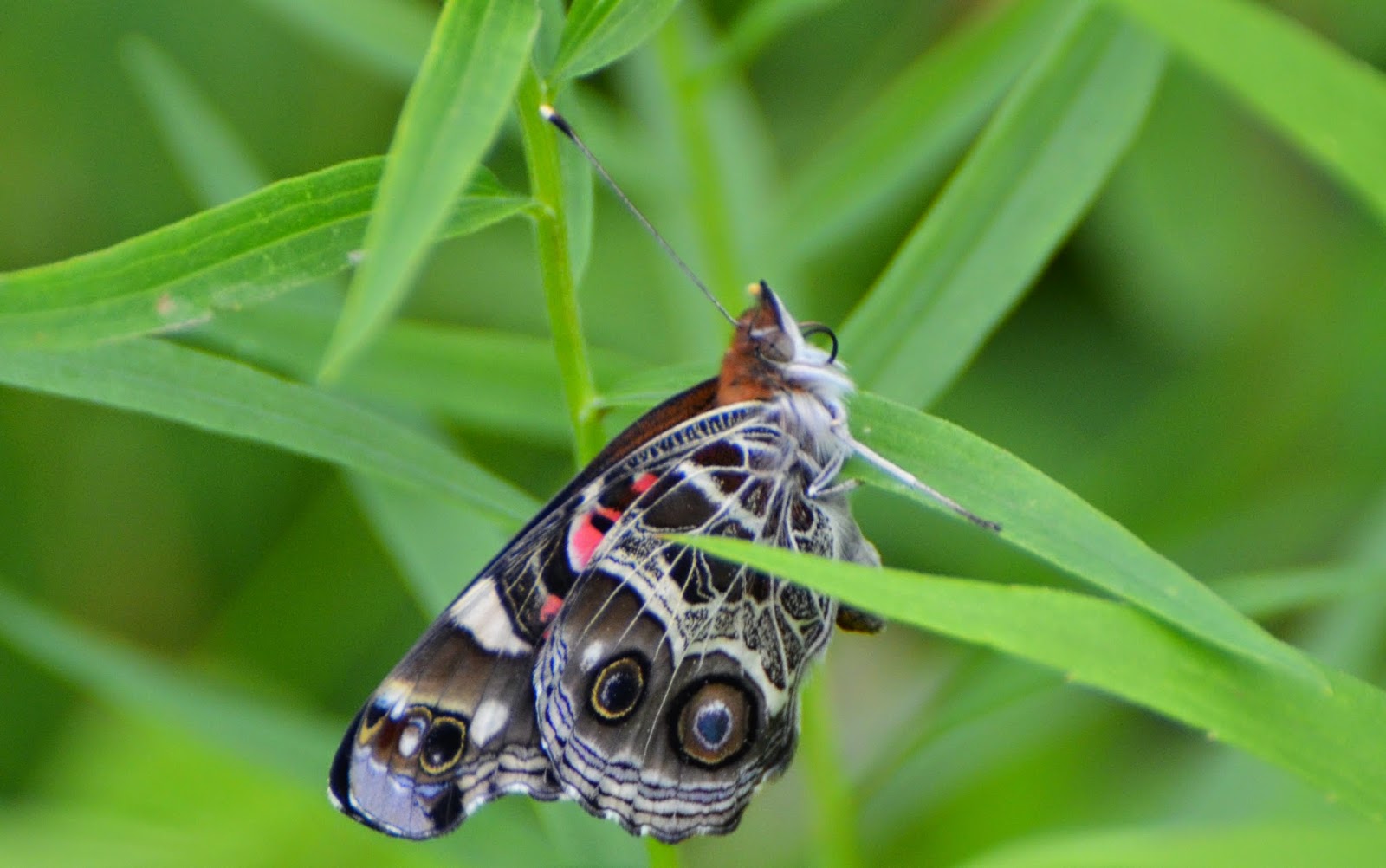 |
| Great Spangled Fritillary feeds on Spotted Knapweed |
 |
| The Northern Pearly-eyed belongs to the butterfly family called the "browns" |
 |
| The outer wings of the Pearly-eyed are replete with eye-spots |
 |
| Top wings show a different configuration of eye-spots. |
 |
| A Northern Pearly-eyed sneaks through the honeysuckle branches |
 |
| The Eyed Brown breeds alongside checkerspots in one of our wetlands |
 |
| The Common Wood Nymph was quite common in the fields this season |
 |
| This Common Wood Nymph shows yellow around its 2 prominent eye-spots - an unusual variation in this region |
 |
| The Painted Lady can be found on several continents |
 |
| The American Lady has an intricate spiderweb design on its underwing as well as 2 very large eye-spots |
 |
| One of many hairstreak butterflies found this season |
 |
| The Hickory Hairstreak was more common this year than last |
 |
| The Banded Hairstreak was a bit hard to find this season |
 |
| Hickory Hairstreak in all its subtle glory |
 |
| Rare now for about 5 years - the colorful Acadian Hairstreak |
 |
| Baltimore Checkerspots remain the butterfly story of the season, since they were common in all suitable habitat |
 |
| Nothing subtle about this beauty |
 |
| A Checkerspot, freshly emerged from its chrysalis, rests on the unopened chrysalis of a neighbor |
 |
| The Little Glassywing Skipper on a Heal All flower |
 |
| The Dun Skipper feeding on Valerian flowers |
 |
| The Hummingbird Moth gets nectar from Common Milkweed flowers. |
 |
| Eight-spot Forester moth feeds on milkweed |
 |
| Sqaure-stemmed Monkey flower grows along the creeks and in the beaver meadows |
 |
| Thimbleweed is one of the anemones that grows in open areas |
 |
| Buttonbush has been flowering for over 2 weeks in a small wet meadow near our main reforestation field |
 |
| Royal Catchfly - from a distance it looks to some like Cardinal Flower, but is no relation |
 |
| Virgin's Bower - a native clematis |
No comments:
Post a Comment